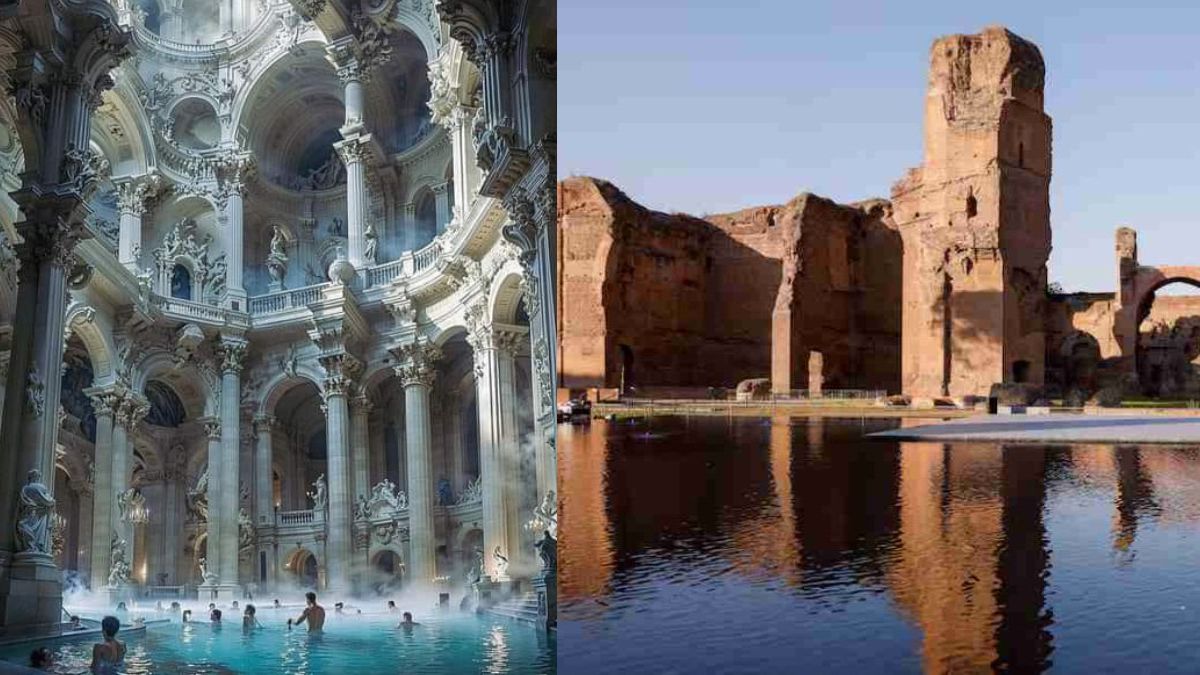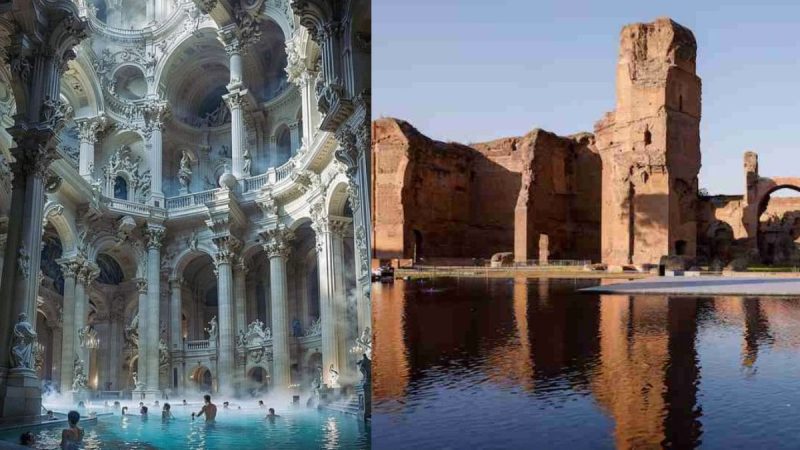The Baths of Caracalla stand as a magnificent testament to the grandeur and opulence of ancient Rome. And now, after 1000 years, celebrations marked the return of water to Rome’s ancient Caracalla baths.
Water Returns To Caracalla Baths
I can't wait to return to 📍Rome and see the Baths of Caracalla with the new water feature, a tribute to its ancient splendor ⛲️✨
pic.twitter.com/LoGLbVpYwN— Mambo Italiano (@mamboitaliano__) April 10, 2024
The Baths of Caracalla were public baths in ancient Rome that were made by Emperor Septimius Severus in AD 206 and completed by his son, Emperor Caracalla, in AD 216. The Baths of Caracalla, one of Rome’s most elegant and luxurious baths, were meant to accommodate approximately 1,600 bathers and remained in use until the sixth century. The remains are now a renowned tourist destination, hosting concerts and theatrical performances.
This month, local officials announced a plan to reintroduce water to the site by erecting a wide, shallow pool that reflects the towering walls of the old structures. The pool, known as the Specchio (or mirror in Italian), is a rectangular structure 42 meters by 32 metres and 10 cm deep, built by architects Hannes Peer and Paolo Bornello. It is intended to evoke the so-called Natatio, the largest of numerous pools in ancient Roman baths, typically placed in the centre.
Water, an element that has been gone for more than 1,000 years, returns in a decisive but respectful way to the ruins. The exhibit, which includes submerged water jets and lighting effects, is part of a larger endeavour by Rome’s cultural authorities. The plan is to restore historic sites to their original design.
Also Read: With Rome Infested With Hornets, Here’s What You Can Do To Stay Safe On Your Next Roman Holiday
Baths As Old As Time
📍 Baths of Caracalla, Rome – Italy 🇮🇹
🚨 News: Water will return to the Baths of Caracalla after 1800 years since its construction, thanks to a long-term project.
The plan, orchestrated by the Special Superintendency of Rome, stemmed from the visionary idea of the management… pic.twitter.com/X1kRcg58Ky— Mambo Italiano (@mamboitaliano__) April 7, 2024
The present ruins, coupled with modern excavations and restorations, are the most extensive of all surviving Roman bathing complexes and consist mostly of a block of enormous doomed bath chambers. There were three primary bath chambers: the frigidarium (cold room), the caldarium (hot room), and the tepidarium (lukewarm room). The vast hall, which sat between the frigidarium and the tepidarium, was roofed by an immense vault with clerestory windows, similar to the vaulted naves of medieval churches. Caracalla baths were also enormous outdoor swimming pools. Marble was abundantly used, with sculpture, mosaics, frescoes, and other decorations adorning the interior. These exquisite baths have influenced architects for ages.
The Baths of Caracalla now host summertime open-air ballet and opera performances, including works with breathtakingly enormous casts like Giuseppe Verdi’s Aida and Georges Bizet’s Carmen. With water, the baths can now take you back to old times.
Cover image credits: Wikimedia Commons





